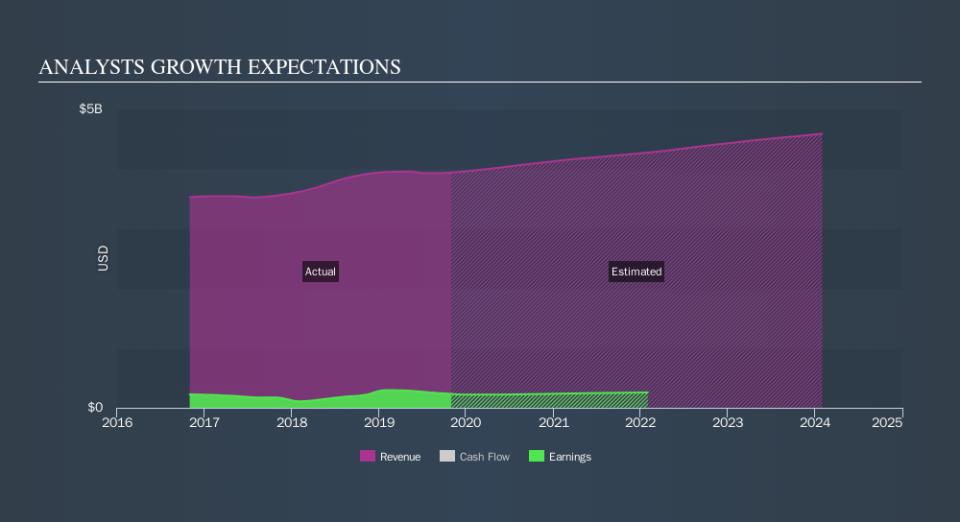Urban Outfitters, Inc. Just Released Its Third-Quarter Earnings: Here's What Analysts Think

It's been a sad week for Urban Outfitters, Inc. (NASDAQ:URBN), who've watched their investment drop 18% to US$25.10 in the week since the company reported its quarterly result. Results were roughly in line with estimates, with revenues of US$987m and earnings per share of US$0.56. Earnings are an important time for investors, as they can track a company's performance, look at what top analysts are forecasting for next year, and see if there's been a change in sentiment towards the company. So we collected the latest post-earnings consensus estimates to see what could be in store for next year.
Check out our latest analysis for Urban Outfitters
Taking into account the latest results, the current consensus from Urban Outfitters's 19 analysts is for revenues of US$4.14b in 2021, which would reflect a reasonable 5.1% increase on its sales over the past 12 months. Earnings per share are expected to increase 6.9% to US$2.46. In the lead-up to this report, analysts had been modelling revenues of US$4.16b and earnings per share (EPS) of US$2.56 in 2021. Analysts seem to have become a little more negative on the business after the latest results, given the minor downgrade to their earnings per share forecasts for next year.
The consensus price target held steady at US$28.00, with analysts seemingly voting that their lower forecast earnings are not expected to lead to a lower stock price in the foreseeable future. It could also be instructive to look at the range of analyst estimates, to evaluate how different the outlier opinions are from the mean. There are some variant perceptions on Urban Outfitters, with the most bullish analyst valuing it at US$36.00 and the most bearish at US$23.00 per share. Analysts definitely have varying views on the business, but the spread of estimates is not wide enough in our view to suggest that extreme outcomes could await Urban Outfitters shareholders.
Zooming out to look at the bigger picture now, one of the ways we can make sense of these forecasts is to see how they measure up both against past performance, and against industry growth estimates. It's clear from the latest estimates that Urban Outfitters's rate of growth is expected to accelerate meaningfully, with forecast 5.1% revenue growth noticeably faster than its historical growth of 3.9%p.a. over the past five years. Compare this with other companies in the same market, which are forecast to grow their revenue 5.9% next year. Factoring in the forecast acceleration in revenue, it's pretty clear that Urban Outfitters is expected to grow at about the same rate as the wider market.
The Bottom Line
The biggest highlight of the new consensus is that analysts have reduced their earnings per share estimates, suggesting business headwinds could lay ahead for Urban Outfitters. They also reconfirmed their revenue estimates, with the company predicted to grow at about the same rate as the wider market. The consensus price target held steady at US$28.00, with the latest estimates not enough to have an impact on analysts' estimated valuations.
Even so, the longer term trajectory of the business is much more important for the value creation of shareholders. At Simply Wall St, we have a full range of analyst estimates for Urban Outfitters going out to 2024, and you can see them free on our platform here..
You can also see our analysis of Urban Outfitters's Board and CEO remuneration and experience, and whether company insiders have been buying stock.
If you spot an error that warrants correction, please contact the editor at editorial-team@simplywallst.com. This article by Simply Wall St is general in nature. It does not constitute a recommendation to buy or sell any stock, and does not take account of your objectives, or your financial situation. Simply Wall St has no position in the stocks mentioned.
We aim to bring you long-term focused research analysis driven by fundamental data. Note that our analysis may not factor in the latest price-sensitive company announcements or qualitative material. Thank you for reading.

